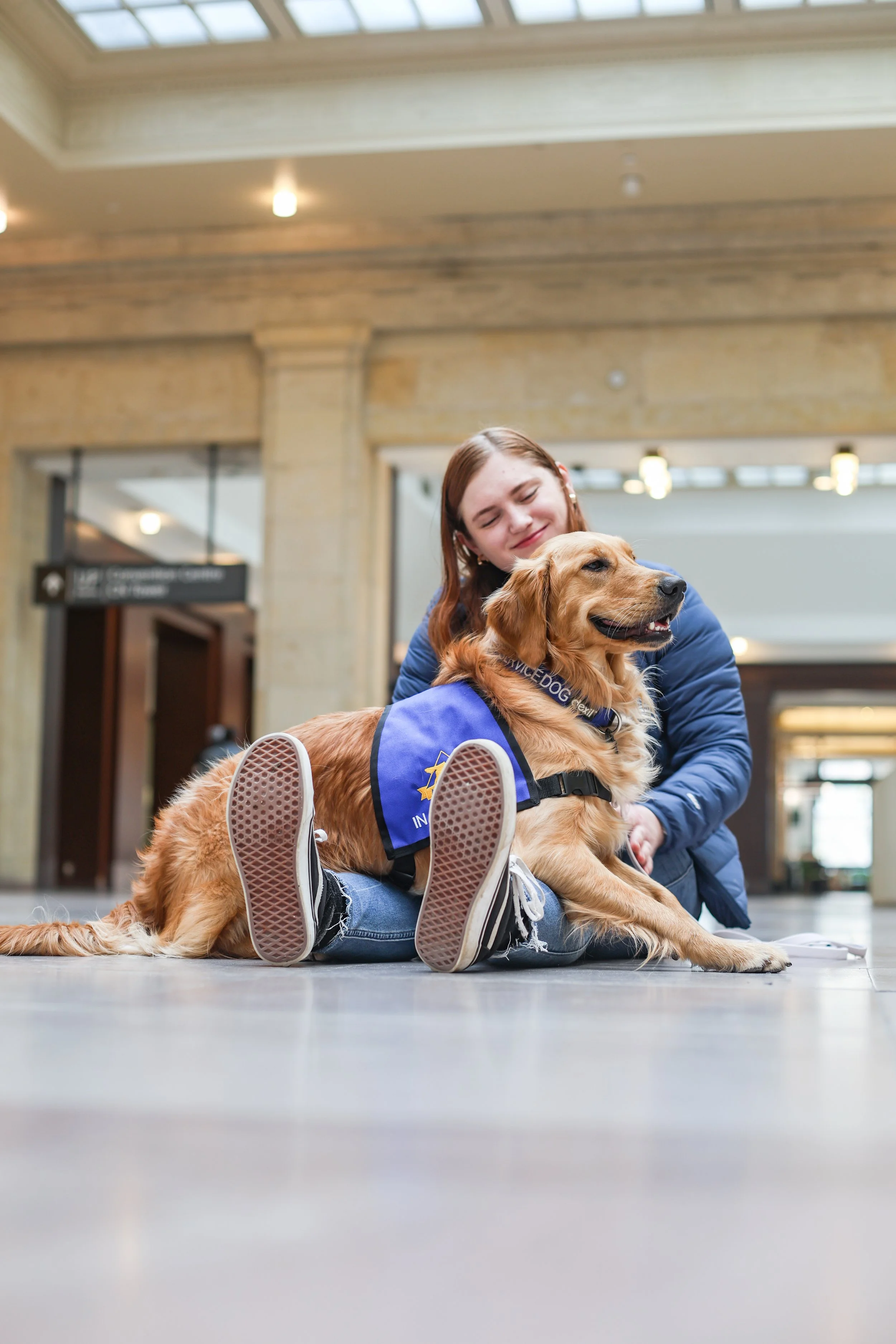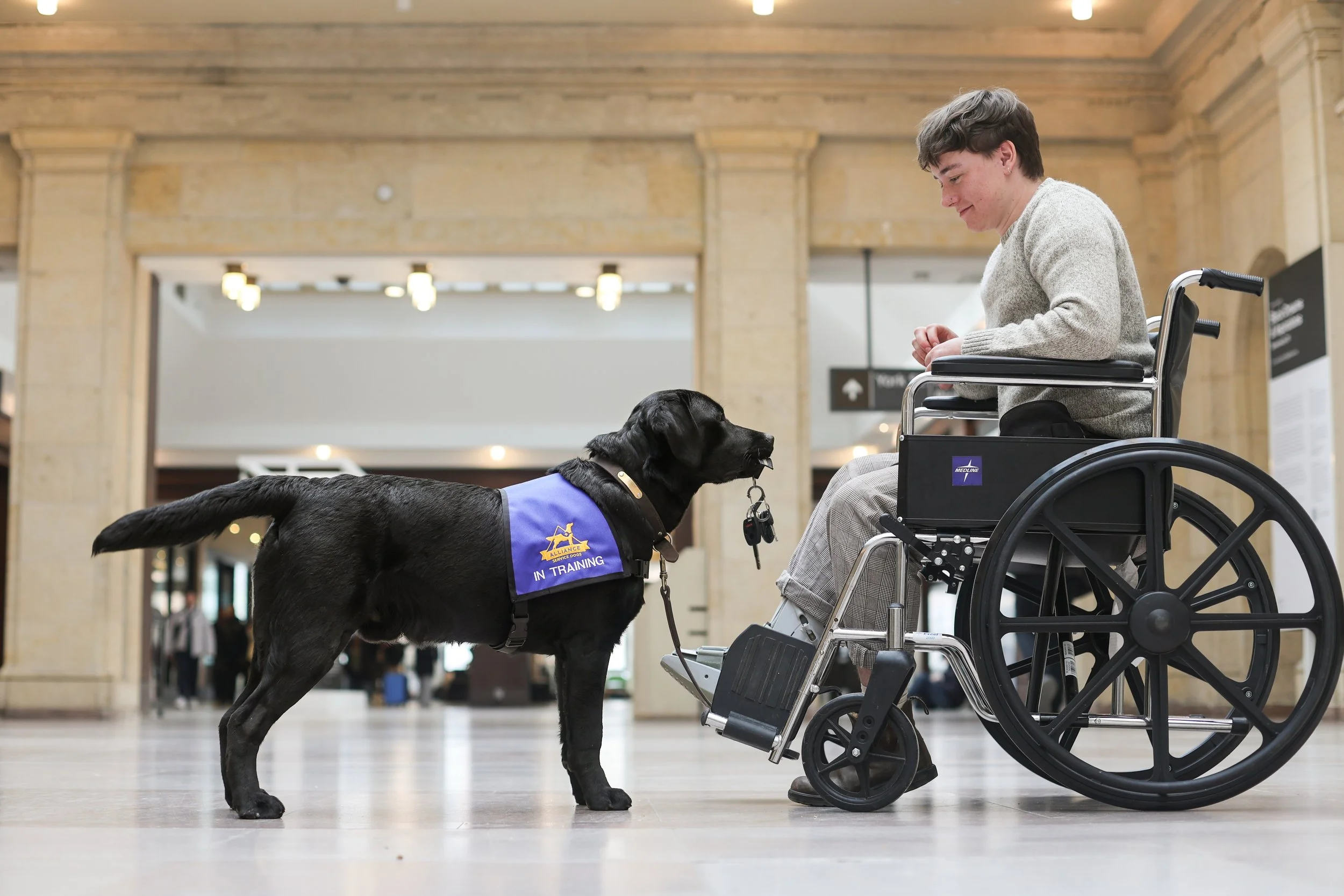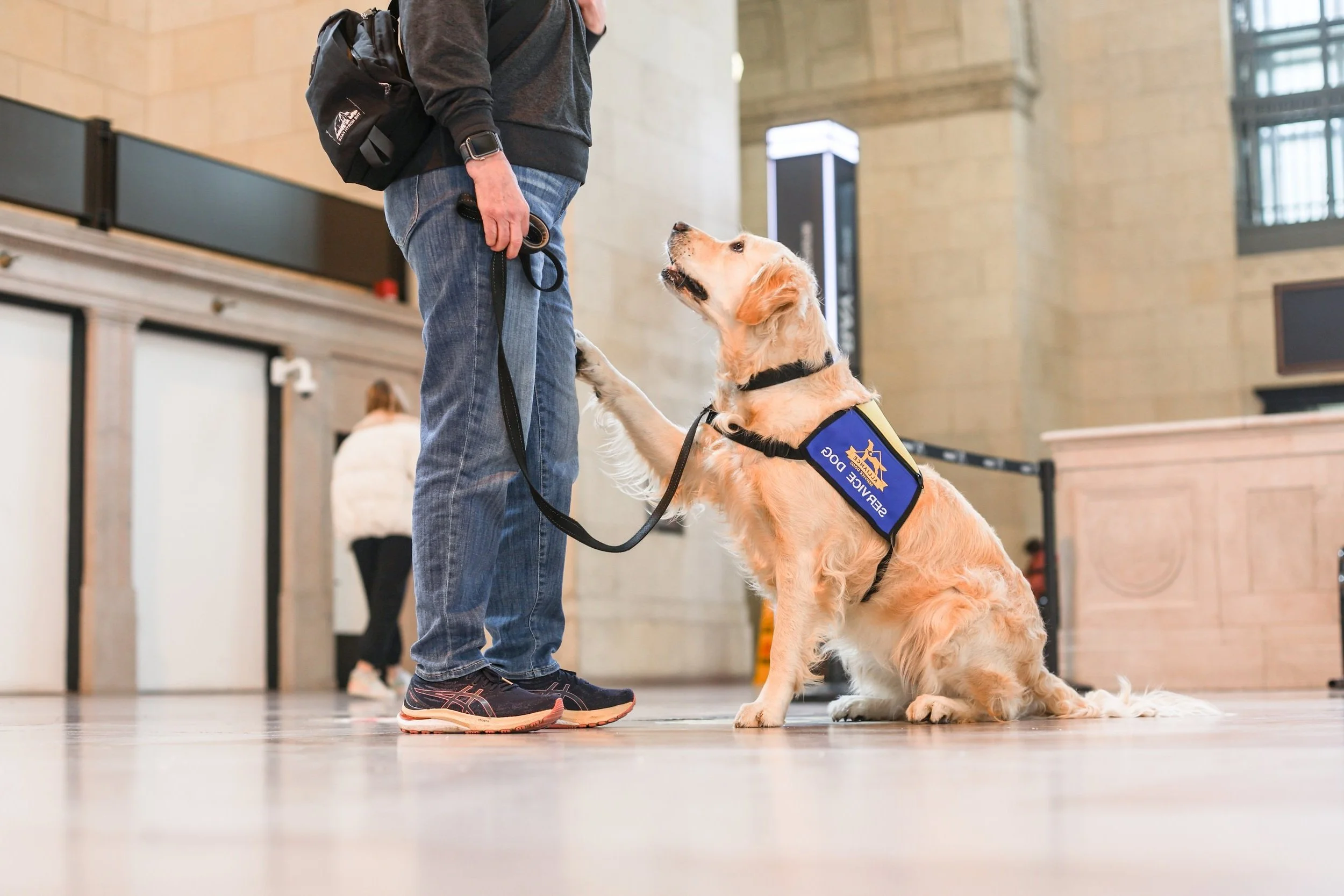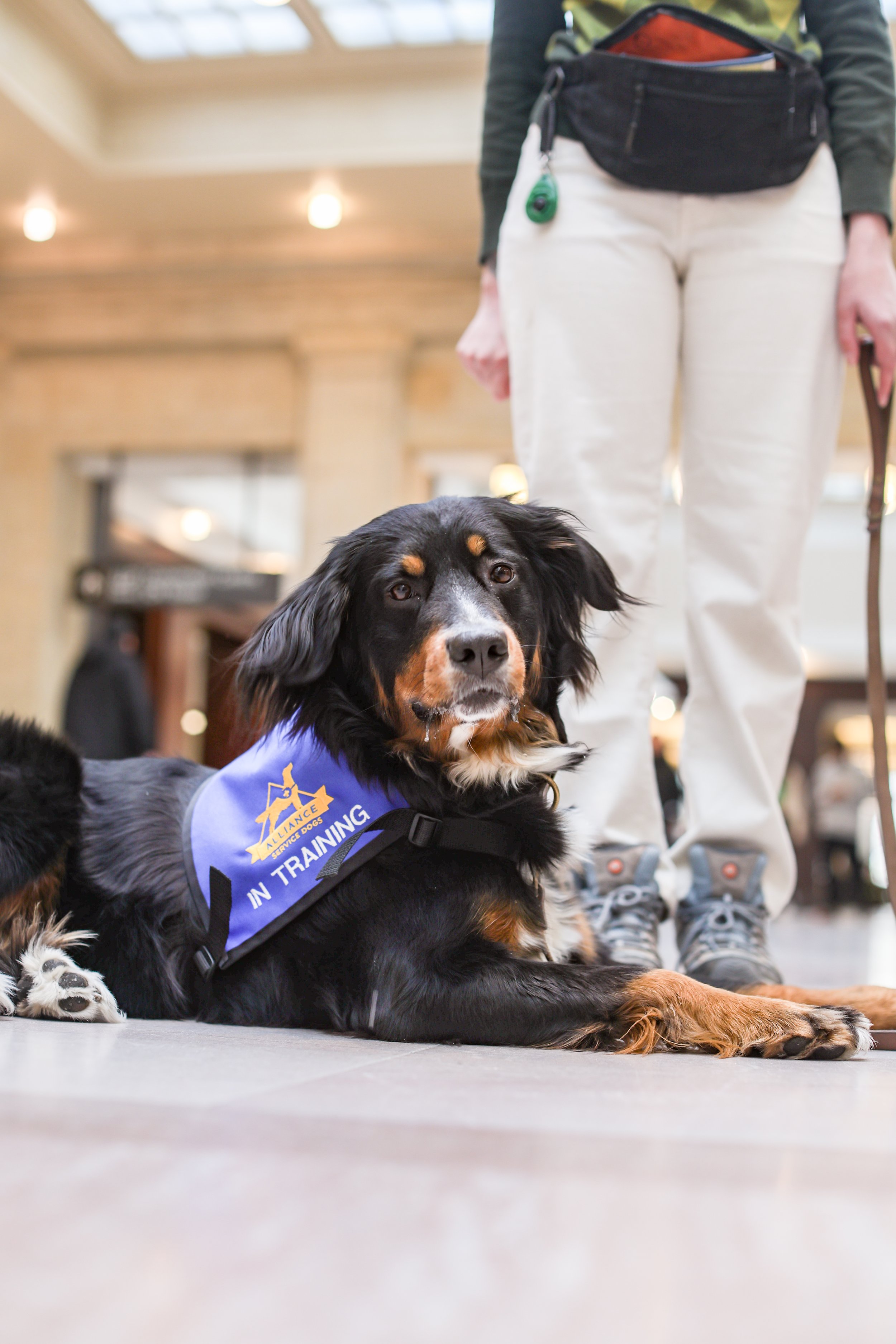Personalized training for a variety of disability types and combinations.
Psychiatric, Cognitive, & Developmental
Assisting with PTSD & C-PTSD, mood disorders (ex. anxiety, depression, bipolar disorder), autism spectrum disorder, traumatic brain injury, and more.
Task examples:
Deep pressure therapy & sensory grounding tasks
Alert and response to panic, anger, self-injurious behaviour, dissociation, or other emotional dysregulation
Retrieving medication, water, comfort items, or support persons
Mobility Assistance
Assisting with orthopaedic disabilities (ex. muscular dystrophy, traumatic injury), neurological disabilities (ex. cerebral palsy), fibromyalgia, POTS, EDS, and more.
Task examples:
Retrieving dropped or out-of-reach items, medication, water, or support persons
Light physical support while stationary and in motion, such as counterbalance and momentum pull
Activating switches and buttons
Medical Alert & Response
Assisting with diabetes, chronic migraine, epilepsy, Deaf and hard-of-hearing, allergies, cardiac, and more.
Task examples:
Scent-based alerts (blood sugar, heart rate, migraine, seizure)
Retrieving medication, rescue supplies, or support persons
Elevating legs, applying pressure, or providing grounding support during and after an episode
Find and lead to an exit, empty seat, bathroom, or vehicle
Youth Handler Program
Designed for disabled youth ages 6-18
May vary from entirely trained by parent/guardian to entirely trained by youth handler
Support available for navigating access in schools
Rare, Multiple, & Co-morbid Diagnoses
Conversation between your medical team and your trainer is encouraged whenever possible, and especially for complex cases. As a core element of our program, task lists and training plans are always customized to your needs and abilities.
Training your own service dog is a monumental task and should not be taken lightly. Successful handlers are:
Diagnosed with a disability by a medical professional. In the eyes of the law, service dogs are classified as medical equipment, and they fulfil exactly that purpose. Obtaining service dog status for your pet dog, solely for housing/travel/public access reasons, is illegal and dangerous.
In possession of a letter from a medical professional, detailing their need for a service animal. This is legally required in Ontario. Alliance Service Dogs must receive a copy of this letter prior to the initial assessment lesson.
Able to communicate honestly about their disability, needs, and limitations. We do need to have a good understanding of your medical history, enough to ensure that we are coaching you appropriately (avoiding triggers, minimizing stress, and adapting to your preferences) as well as training your dog to meet your needs in a way that is going to help you long-term.
Able to dedicate a significant amount of time, energy, and money to the training process. Unlike a dog bred, raised, and trained by an organization, where applicants receive a fully-trained dog sometimes at no cost, the owner-training process requires considerable resources.
Am I a good fit?
Whether you already have a prospect, or you are in the process of acquiring one, there are some important qualities to be aware of. Successful prospects are:
Physically healthy. Service dogs must be active and sound enough to work for long periods throughout the day. Dogs who have chronic health conditions or poor endurance are not suitable for this demanding job.
Under 4 years of age. As service dogs tend to retire around 9-12 years of age, dogs over 4 years will work for only a few years (after the 2-year training period) before having to retire.
Temperamentally sound. Fear, anxiety, or aggression issues are often deeply rooted. Not only do they take a lot of effort and time to solve, but they also cause stress for the dog, handler, and the public.
Motivated to work for food. The vast majority of training is done using food rewards, as this is the easiest and most effective way to train difficult behaviours to a high level of accuracy.
Physically and temperamentally suitable for the required tasks. Some traits are barriers in training for service work, depending on the disability.
It is fine if you are unsure whether or not your dog fits these qualities. The Meet & Greet will help clarify where your dog falls within the requirements.





